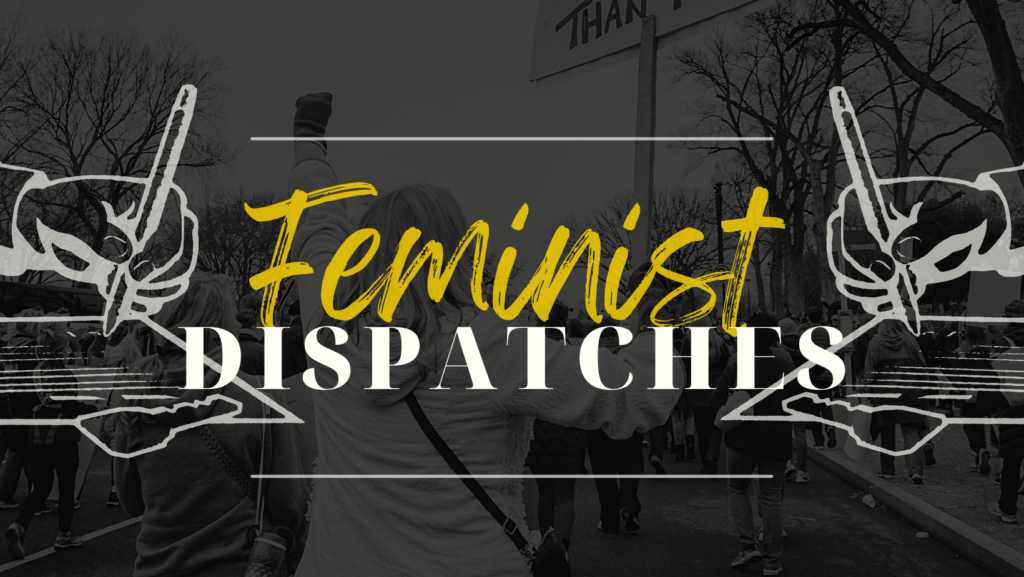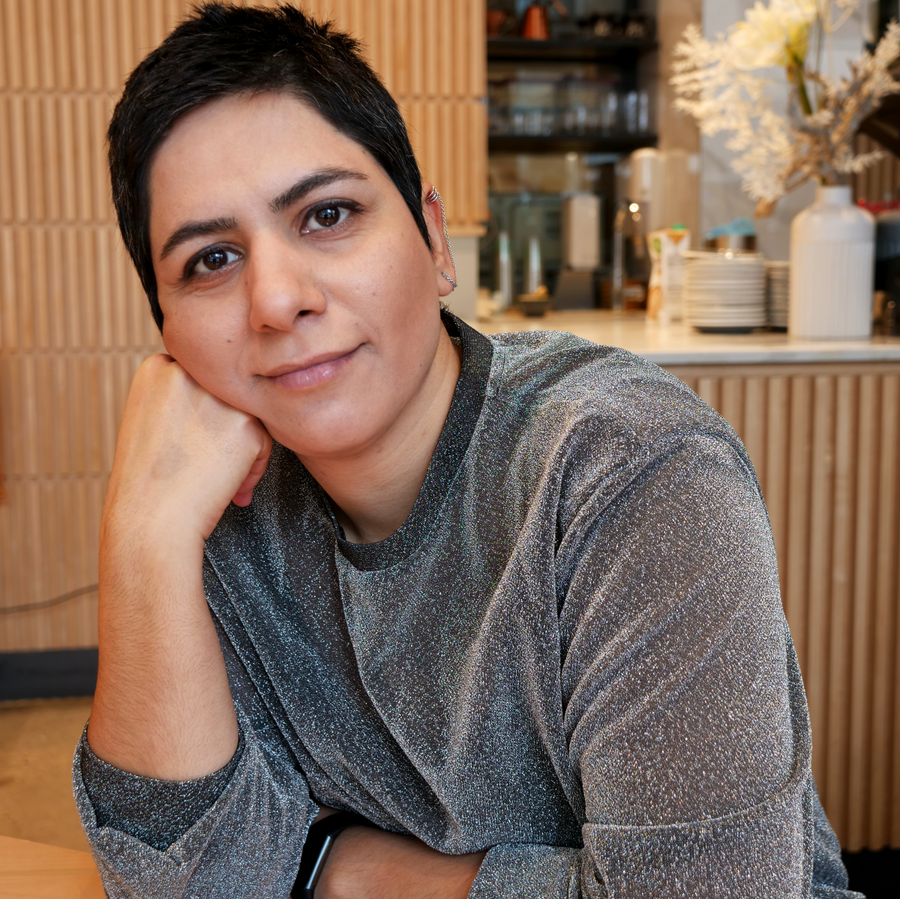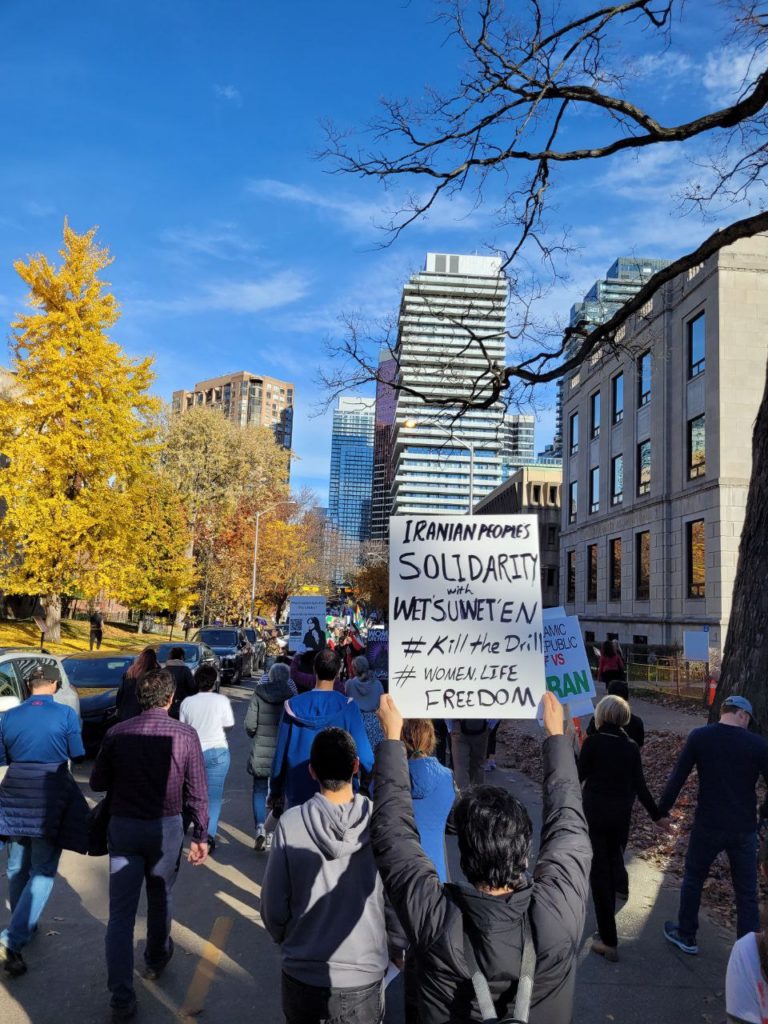Dispatch by Fatemeh Gharibi

These reflections are drawn from doctoral student Fatemeh Gharibi’s talk on a panel entitled “Woman. Life. Freedom: What does solidarity with the Iranian uprising look like?” held on Nov 29, 2022. The event was co-sponsored by the Iranian Graduate Student Association at York University (IGSAYU), The Centre for Feminist Research, and the Faculty of Graduate Studies.
I am an “uninvited guest” in Tkaronto. As someone with a temporary status, I am not technically settled. Nonetheless, I am living on this land and benefitting from it. More importantly, I entered via the Canadian immigration system. As scholars like Sunera Thobani (2007) and Harsha Walia (2013) teach us, this system is designed to perpetuate the dispossession and displacement of Indigenous peoples. Those of us who come from countries in crises like Iran—as students, as immigrants, as temporary workers, or as refugees—did not choose the circumstances of our arrival on these lands. But this does not change the fact that we are complicit with Canada’s ongoing settler colonialism.
When we gathered for the discussion on November 29, 2022, it was just one of many events that brought together York University community members in response to recent incidents in Iran. We came together to remember Zhina (Mahsa) Amini, who died while in the custody of the so-called “morality police” in Tehran on September 16, 2022. Since her death, there have been ongoing protests all over Iran, with protesters facing a severe crackdown by the Iranian state. Hundreds have been killed and thousands have been incarcerated by the riot police and the plainclothes militia.
This is not the first massive protest in Iran since the 1979 revolution. It is the first time, however, that protests against the regime have been at the centre of global attention. In the diaspora, people with Iranian backgrounds and our allies have come together to protest along with those in Iran every week since Zhina’s death.
Like many others, I have grappled with my role in supporting the protests. Each one of us occupies a unique, intersectional location that affects how we see the uprising in Iran and how we orient ourselves toward it.
Solidarities Beyond Borders
When we say “Iranians,” we are not talking about a homogeneous group, whether in Iran or the diaspora. We are gendered, classed, ethnicized, and colonized in distinctive ways. But each of us need to ask ourselves: what does our specific social location mean for us here in Canada? What is the thread by which we can tie our unique social locations together to create meaningful solidarity with protesters in Iran?
For many, the common thread that knits us together is our shared hatred of the Islamic Republic regime. This hatred is valid, but it is not enough. In particular, when it comes to issues of gender and sexuality, a singular focus on the state stops us from acknowledging the systems of power that operate beyond governments. From that vantage point, we can see a new unifying thread: the desire to dismantle heteropatriarchy and all forms of colonialism. This goal is embedded in the slogan that has been taken up and repeated, becoming the anthem of the recent protests: “Woman. Life. Freedom.”

We need to understand the issues of ethnicized nations, such as the Kurds and Balouch folks in Iran, from the lens of colonization. When we do, we see the rich potential for solidarity among those movements and Indigenous movements here in Canada. We cannot talk about children being brutally killed by the Iranian state without connections to the Every Child Matters movement, which seeks meaningful reconciliation after the murder and forced assimilation of Indigenous children in the residential school system in Canada. We cannot talk about femicide in Iran without linking this violence against women to the systemic genocidal violence against the Missing and Murdered Indigenous Women and Girls, on the land that we speak from.
Such connections help us to see and learn from each other’s experiences. When we work together, we can begin to understand how we can disrupt the narratives of progress that may otherwise haunt us—ruining our attempts at solidarity—when we try to support movements in the global south while located in the global north.

Queer and Trans Identities in Iranian Contexts
I first heard the slogans “Queer. Life. Freedom” and “Queer. Trans. Freedom” at a student rally at University of Toronto on Sep 22, 2022, just six days after Zhina’s death. There were only a few of us responding, positively and with hope, to that slogan.
Little by little, more people in the Iranian community grew tolerant of these messages and there were more rainbow flags at the next rallies.
Inside Iran, more folks who identified with LGBTQ+ identities became visible in the protests. This visibility is happening for the first time, creating a rich space of solidarity between 2SLGBTQIA+ activists in Canada and Iran.
Although there have been some controversies, it is important to address them and not hide from the dilemmas that they pose. Some Iranian LGBTQ+ activists and organizations in the diaspora have announced that a few of the murdered protesters were gay and lesbian, relying on vague evidence and unverified assumptions. We can say a lot about the ethical matters involved in outing someone after their death—without consent or considering the consequences for survivors. While most of the online discussion is about whether the evidence proves the “truth” about those individuals’ sexualities and whether their families have the right to deny it, my concern is about using Western identity politics and dominant expressions to count someone as queer and exclude others.
We need to understand that LGBTQ+ identities are complex. Historically and still today, in some regions, including Iran, there are gender variances like mukhanath, just as we have LGBTQ+ and Two-Spirit people in Indigenous communities here. There have been always non-heteronormative and non-gender binary people and practices in Iran. But the shift from practice to identity has not happened in Iran as it happened in the West, as described by Michel Foucault (1986) in his History of Sexuality (Najmabadi, 2014). What Mehran Rezaei-Toroghi (2020) teaches us about the existence of an “assemblage” of ancient and contemporary sexual politics in today’s Iran applies to gender, and sexual practices and desires as well. As I see it, Western LGBTQ+ identities are mainly used by middle- and upper-class millennials and Generation Z who are socialized into a globalized culture.
Solidarities Across Gender and Sexuality
When I use the word “queer,” I am not designating a single identity. Instead, I understand “queer” to encompass all ways of being that are not exclusively cis and heterosexual. In that sense, women and all kinds of queers in Iran—whether in literature, religion or law—have historically been closeted. They all had to wear a metaphorical hijab, to be covered and concealed.
In today’s Iran, there is a contradiction between the historical will to keep sexual matters invisible and the modern will to govern bodies, which entails a will to know everything (Rezaei-Toroghi, 2020). This contradiction leads to ambiguous laws that, for instance, allow trans folks to transition, but only to better regulate their bodies, clearly defined as a man or a woman.
In this context, the demands of queer communities and the demands of women overlap, as both insist on the right to “more companionate unions and the right to live in dignity and respect outside the [heterosexual] matrimonial unit” (Afary, 2009, p. 357-58).
As Afsaneh Najmabadi (2014) writes, this is nothing more and nothing less than the demand to have a “livable life.”
It is not our role—those of us living in the global north—to determine who is queer and who is not. We should not draw conclusions from our own conceptions of what constitutes LGBTQ+ identity markers, coming out narratives, and dominant gender expressions. We should respect those who are closeted, whether for legal or cultural reasons, and we should respect those who do not necessarily identify with their sexual practices and gender performances, or use labels familiar to us.
We need, too, to accept an expansive understanding of womanhood. When we say “Woman. Life. Freedom,” we include all those who share the gender and sexuality closet with women. But we also remember and include all those who are invisibilized and marginalized under a violent heteropatriarchal regime.
What do I hope for?
My ideal future is one that is queer, with no nation-states, no oppressive boundaries, no borders, no prisons, and no police, on a planet that is not dying.
For Iran specifically, I (naively) hope that the Iranian state comes to its senses and realizes that no dictatorship has ever lasted. I hope they leave power, as the Shah did eventually, without more violence.
I see reasons to be hopeful through nations, if not nation-states, and in grassroots movements.
I hope that we will stop fighting similar battles in isolation and come together.
I hope that international civil societies will hold their governments accountable for how they trade with Iranian nations for oil, to sell weapons, and to advance other imperialist goals.
I hope that we all hold our governments accountable for how we treat refugees, immigrants, temporary workers, undocumented folks, and international students coming from countries in crisis.
I hope we can dismantle heteropatriarchy, from our smallest daily acts to the largest structures.
I hope there will be chances to learn from history and other movements.
I hope that we do not make the same mistakes over and over, so that we do not have to start another revolution forty years from now.
We must educate ourselves. We must learn. And learning takes time. But now is as good as any moment to begin.
For suggestions about how to approach solidarity—”dos and don’ts” and a reading list—please click here. Everyone with the link can add more items.
References
Afary, J. (2009). Sexual politics in modern Iran. Cambridge University Press.
Foucault. (1986). History of sexuality. (1st ed.) Vintage Books.
Najmabadi, A. (2014). Professing selves: Transsexuality and same-sex desire in contemporary Iran. Duke University Press.
Rezaei‐Toroghi, M. (2020). The politics of un-truth and the assemblage of sexuality: Revisiting the Foucauldian methodology in studying sexuality in post-revolutionary Iran. Sexuality, Gender & Policy, 3(1), 36–69. https://doi.org/10.1002/sgp2.12010
Thobani, S. (2007). Exalted subjects: Studies in the making of race and nation in Canada. University of Toronto Press.
Walia, H. (2013). Undoing border imperialism. AK Press.
